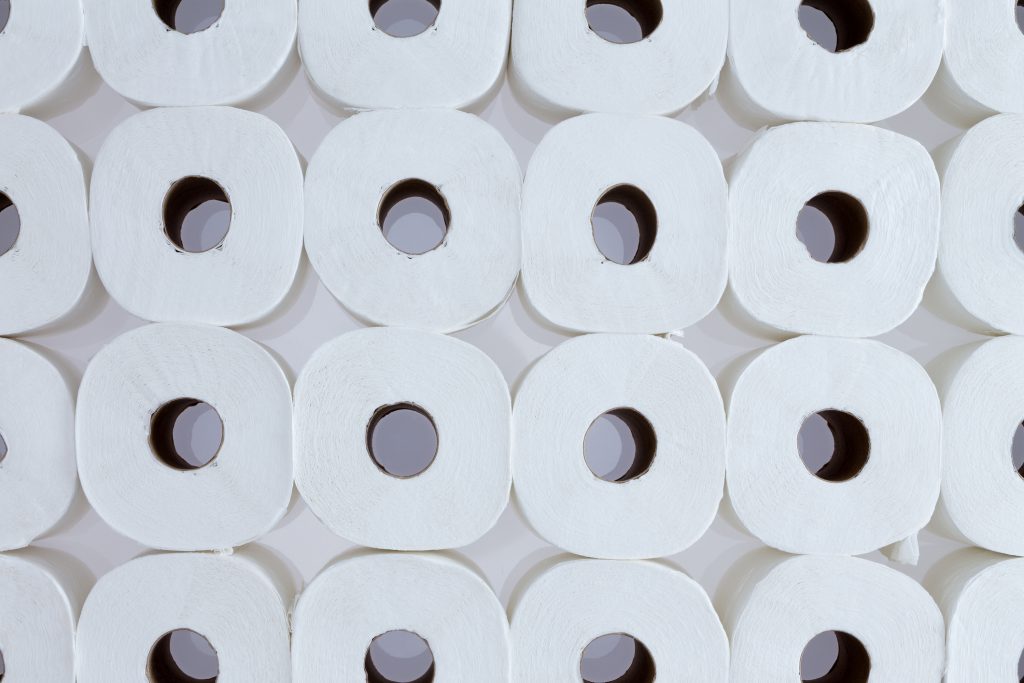
The vast majority of TP sold in America is Made in America. Factories are operating 24/7 to make it.
If you have been to the grocery store lately, you probably noticed at least a few empty shelves.
As much of the world battles the deadly novel coronavirus, Americans are stocking up on household staples as they prepare to spend several months quarantined at home.
And all that panic buying has caused a most unusual run on toilet paper purchases.
About 90 percent of all toilet paper purchased in the United States is Made in America, and America’s pulp and paper manufacturers are operating around the clock to try to keep stores stocked.
Large paper companies such as Georgia-Pacific and Kimberly-Clark Company make popular brands like Quilted Northern, Angel Soft, Cottonelle and Scott bathroom tissues, and a majority of bathroom tissue is produced right here in America by members of the United Steelworkers (USW) union.
Approximately 8,500 USW members of America’s largest industrial union are employed at our nation’s paper mills.
USW member TJ Cutler said his mill in Fort Edward, N.Y., received an order this past week for 1.5 million cases of toilet paper. “Not sure why TP is the thing, but we will make it,” Cutler said, via the United Steelworkers.
Paper company orders have increased by 20 percent during the pandemic, even though most mills typically operate on a 24/7 basis.
Georgia-Pacific, which makes Quilted Northern, Angel Soft, and several generic brands, shipped about 120 percent of its normal capacity last week, according to company spokesman Greg Guest. The company has 14 manufacturing facilities in 11 states that are staffed by about 7,500 employees.
“I can’t give you a specific number, but we are obviously running as much as we can. The mills are ready.” Greg Guest, Georgia-Pacific spokesman
“We are doing everything we can to move products from our manufacturing locations to our customers as soon as we can, as fast as we can,” Guest said. “ We can only load so many trucks in a certain time frame, but we are working as hard and fast as we can to manage the logistics, having trucks lined up and ready to go and be able to get the product out of the plant.
“At the start of this, in the last week or two, our inventory was at pretty healthy levels. We are trying to do some sort of combination of pulling from existing inventory and increase production and trying to be very smart and very focused on how we make the distribution as efficient as can be.
“One good example of that is right now we are shipping in many cases directly from a manufacturing location to a customer, rather than going through a typical distribution system, where it might sit in a warehouse first and then go to them. We are going straight from our manufacturing locations to a customer.”
Georgia-Pacific has suspended its direct online purchases so that the company can get its products into retail stores as quickly as possible.
“I can’t give you a specific number, but we are obviously running as much as we can,” Guest said. “The mills are ready. It’s just big large pulp and paper mills don’t turn on and turn off in a seven- or eight-hour day. They work 24/7 all the time. They are designed to run 24/7.
“There really is a sharp spike in demand at the consumer level, with people buying multiple packs when they wouldn’t necessarily buy those multiple packs at the same time. They wouldn’t normally buy those multiple packs, and the last two weeks we are running to try and keep up with it, moving product as fast as we can to our customers. We recognized this is an important product and we want to help meet the consumers’ needs for it.
“We are basically a North American manufacturing company, so it is not any kind of issue like a supply chain disruption from Asia. We primarily manufacture all of our products in the U.S.”
So how much toilet paper should you have on hand?
IRI panel data finds that a family of four needs 17 rolls of 2-ply toilet paper for a two-week period. That includes a bit of extra snacking now that most Americans are spending their days at home.
There’s a good reason not to hoard. Eventually, the coronavirus pandemic will wind down, but America’s paper mills could run into a problem of overcapacity. People that are loading up on toilet paper today may have a supply that could last several months, which could put a strain on future pulp and paper industry sales.
But in the meantime, America’s toilet paper producers are doing all they can to stock the shelves.
Terry Balluck of Kimberly-Clark, makers of Cottonelle and Scott toilet paper brands, reports that the company’s operations are full steam ahead while keeping the concerns of the health of its employees at top priority.
“We want to assure consumers that we are doing our best to ensure a steady supply of product to stores and Kimberly-Clark is working closely with our retail partners and customers to understand their current needs,” Balluck said in a statement. “We have plans in place to address the increased demand for our products to the extent possible, including accelerating production and reallocating inventory to help meet these needs.
“We will continue to make adjustments to our plans as necessary.”

